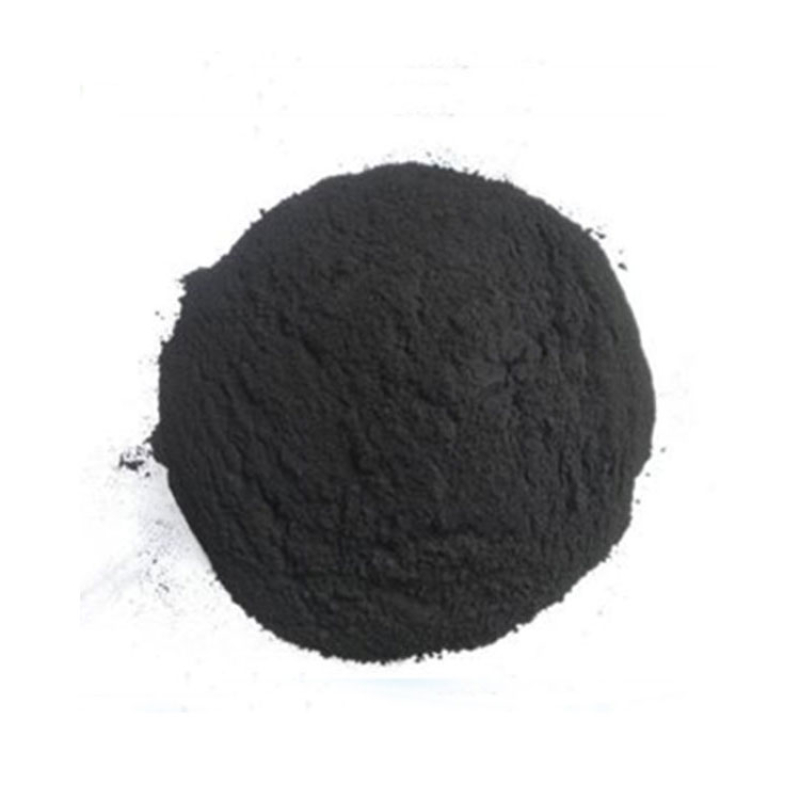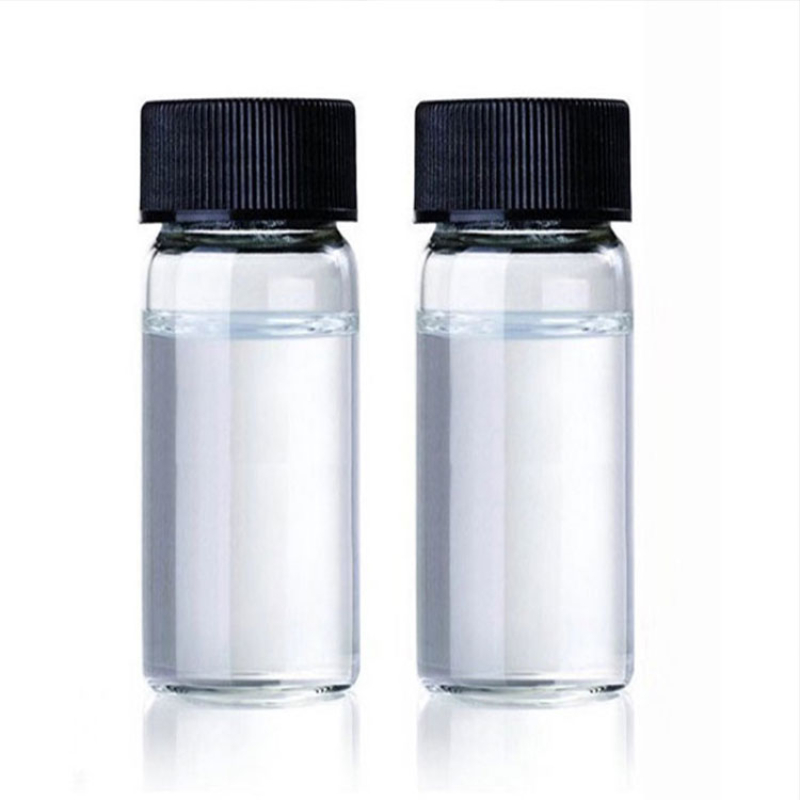Products Description of Nickel carbonateCAS#3333-67-3Nickel carbonate is a light green crystal at room temperature. It is almost insoluble in water, more soluble in water containing CO2 than pure water, soluble in ammonia water and dilute acid, and insoluble in cold concentrated hydrochloric acid and nitric acid. When strongly heated in the air, it generates oxides. It reacts with ammonium chloride solution to produce CO2 and NH3, leaving nickel chloride (II) solution.Nickel carbonate is an important nickel compound.
Contact Now
Products Description of Potassium carbonate CAS#584-08-7Potassium carbonate (chemical formula: K2CO3, English Potassium carbonate), also known as potash, has the appearance of colorless crystals or white particles, is very soluble in water, and its solution is strongly alkaline. When its saturated aqueous solution is cooled, a glassy monoclinic hydrate 2K2CO3·3H2O crystal is separated, with a density of 2.043, and loses crystal water at 100°C. It is insoluble in ethanol, acetone and ether.
Contact Now
Products Description of Zirconium basic carbonate CAS#57219-64-4Zirconium carbonate is a white powdery solid that is soluble in ammonium carbonate and easily soluble in organic acids to form corresponding organic acid zirconium. It is more soluble in inorganic acids, but insoluble in water and organic solvents. It is easily decomposed by heat, so it is not suitable for long-term storage.
Contact Now
Products Description of Guanidine carbonate CAS#593-85-1Guanidine carbonate is a chemical substance with the chemical formula C2H10N6H2CO3 and its appearance is a white crystalline powder.Guanidine carbonate Chemical PropertiesMelting point >300 °C(lit.)density 1.25vapor pressure 0Pa at 25℃storage temp. Store below +30°C.solubility 450g/lform Crystalline Powderpka12.5[at 20 ℃]color White to almost whitePH11.7 (110g/l, H2O, 20℃)Water Solubility 450 g/L (20 ºC)BRN 3628359InChIKeyKMSRVXJGTIRNNK-UHFFFAOYSA-NLogP-1.63 at 20℃CAS DataBase Refe
Contact Now
Products Description of Palladium CAS#7440-05-3Palladium is a transition element of Group III (nickel group) and light platinum metal in the periodic table. It is a silvery-white metal that is moderately hard, moderately forgeable, and ductile. Palladium is an intermediate element in Group 10 of transition elements (periods 4, 5, and 6). Many of its properties are similar to those of nickel, which is above it, and platinum, which is below it, in this group. Palladium is a soft, silvery-white metal that has chemical and physical properties very similar to those of platinum.
Contact Now
Products Description of Cobalt carbonate CAS#513-79-1Red monoclinic crystals or powder. Almost insoluble in water, alcohol, methyl acetate and ammonia.
Contact Now
Products Description of Calcium carbonate CAS#471-34-1Calcium carbonate occurs in nature as limestone in various forms, such as marble, chalk, and coral. It is probably the most widely-used raw material in the chemical industry. It has numerous applications, primarily to produce cement, mortars, plasters, refractories, and glass as building materials. It also is used to produce quicklime, hydrated lime and a number of calcium compounds. It is produced either as powdered or precipitated calcium carbonate. The latter consists of finer particles of greater purity and more uniform size.
Contact Now
Sodium carbonate CAS#497-19-8Overview:Sodium Carbonate, with the chemical formula Na2CO3 and CAS number 497-19-8, is a widely recognized chemical compound known for its diverse applications across various industries.
Contact Now
Products Description of Magnesium carbonate hydroxide CAS#39409-82-0This product is white monoclinic crystal with a relative density of 2.254. It is slightly soluble in water and easily soluble in dilute acid. It will foam and decompose in acid to release carbon dioxide. It will generate magnesium oxide and carbon dioxide when heated and calcined.Magnesium carbonate hydroxide Chemical Propertiesdensity 2.16RTECS FG1797000storage temp. 2-8°Cform Solidcolor WhiteOdorat 100.00?%. odorlessWater Solubility Soluble in water.
Contact Now
Products Description of Cesium carbonate99.9% CAS#534-17-8Cesium carbonate is an inorganic compound. It is a white solid at room temperature and pressure. It is very soluble in water and absorbs moisture quickly when placed in the air. The aqueous solution of cesium carbonate is strongly alkaline and can react with acid to produce the corresponding cesium salt and water, and release carbon dioxide. Cesium carbonate is easy to transform and can be used as a precursor of other cesium salts.
Contact Now
Dimethyl carbonate CAS#616-38-6Dimethyl carbonate is quickly referred to as DMC. At room temperature, it is a colorless and obvious liquid with a pungent smell with a relative density (D204) of 1.0694, a melting factor of four °C, boiling factor of 90.3 °C, the flash factor being 21.7 °C (opening) and being 16.7 °C (closed ) and the refractive index (nd20) being 1.3687.
Contact Now
Products Description of Tetrahydropyran CAS#142-68-7Tetrahydropyran, also known as oxadiazine, is a six-membered oxygen-containing saturated heterocyclic ring. It is a colorless, flammable liquid at room temperature with a special smell. It is miscible in water, ethanol, ether, and other organic solvents. It generates explosive organic peroxides under light. It is prepared by hydrogenation of dihydropyran in the presence of Raney nickel or reaction of 5-dibromopentane and water in the presence of zinc oxide.
Contact Now
Sodium Methylbenzotriazole CAS#15217-42-2Sodium methylbenzotriazole product uses:Corrosion inhibitor: Mainly used as a rust inhibitor and corrosion inhibitor for metals (such as silver, copper, lead, nickel, zinc, etc.). It can be adsorbed on the metal surface to form a very thin film, preventing corrosive media such as water and oxygen from contacting the metal, thereby protecting the metal from corrosion.
Contact Now
Products Description of CALAMINE CAS#8011-96-9Calamine is also known as Lugan Stone, Gan Stone, Lugan Stone, Sheep Liver Stone, Fushui Gan Stone, Luyan Stone, and Dry Stone. It is an irregular block, flat or round, of varying sizes, with a white or light red surface, depressions or small holes, and powdery. It is light and loose, fragile, white or light red in cross section, granular, and has small pores, and is hygroscopic.Calamine is an ore of the carbonate mineral smithsonite. Calamine tastes sweet, flat, warm, and non-toxic.
Contact Now
Products Description of Zirconium acetate CAS#7585-20-8Zirconium acetate (liquid), a colorless transparent liquid, is made by the reaction of zirconium oxychloride and sodium carbonate.
Contact Now
Tolytriazole Sodium Salt CAS#64665-57-2Toluene triazole sodium salt (CAS: 64665-57-2) can be used as a petroleum additive.It has the following characteristics that make it suitable for petroleum-related fields:Anti-rust and corrosion inhibition: It has good anti-rust and corrosion inhibition properties for metals, and can protect metal parts (such as silver, copper, lead, nickel, zinc, etc.) in petroleum processing equipment, pipelines and storage containers from corrosion, extending the service life of equipment.Lubricant additive: It can improve the performance of lubricants, play an anti-ox
Contact Now
Products Description of Diethylenetriaminepenta(methylene-phosphonic acid) CAS#15827-60-8DTPMPA is used as a scale inhibitor for circulating cooling water and boiler water in water treatment. It is particularly suitable for alkaline circulating cooling water as a scale inhibitor without pH adjustment. It can also be used as a scale inhibitor for oil field injection water, cooling water and boiler water containing high barium carbonate. When this product is used alone in a compound agent, there is no need to add a dispersant, and the amount of dirt deposition is still very small.
Contact Now
Products Description of Amino tris(methylene phosphonic acid) CAS#6419-19-8Chlorotrimethylenephosphonic acid, also known as aminotrimethylenephosphonic acid (ATMP), has good chelation, low-limit inhibition and lattice distortion effects. It can prevent scale-forming salts in water from forming scale, especially calcium carbonate scale. Aminotrimethylenephosphonic acid is chemically stable in water and is not easily hydrolyzed.
Contact Now
Products Description of Potassium Hydroxide CAS#1310-58-3 Potassium hydroxide is an inorganic compound with the chemical formula KOH. It is a common inorganic base with strong alkalinity. The pH of 0.1 mol/L solution is 13.5. It is soluble in water and ethanol, slightly soluble in ether, and easily absorbs moisture in the air to become deliquescent. It absorbs carbon dioxide to form potassium carbonate.
Contact Now
Products Description of Calcium chloride CAS#10043-52-4Calcium chloride, CaC12, is colorless deliquescent solid that is soluble in water and ethanol. It is formed from the reaction of calcium carbonate and hydrochloric acid or calcium hydroxide and ammonium chloride. It is used in medicine, as an antifreeze, and as a coagulant.Calcium chloride (CaCl2) has many uses. It is used as a drying agent and to melt ice and snow on highways, to control dust, to thaw building materials (sand, gravel, concrete, and so on).
Contact Now
Products Description of Copper(II) sulfate CAS#7758-98-7 Copper sulfate is an inorganic compound. The inorganic industry uses it to make other copper salts such as cuprous chloride, cupric chloride, copper pyrophosphate, cuprous oxide, copper acetate, copper carbonate, etc. The common form of copper sulfate is crystals. Anhydrous copper sulfate is a white crystalline powder, which may also be light gray-green due to impurities. It is a soluble copper salt. The relative density is 3.603, and the solubility in water at 25°C is 23.05g.
Contact Now
Products Description of 1,3-Dioxan-2-one CAS#2453-03-4Used to synthesize polytrimethylene carbonate (PTMC)1,3-Dioxan-2-one Chemical PropertiesMelting point 45.0 to 49.0 °CBoiling point 135°C/4mmHg(lit.)density 1.200±0.06 g/cm3(Predicted)storage temp. under inert gas (nitrogen or Argon) at 2-8°Csolubility soluble in Methanolform powder to crystalcolor White to Almost whiteSafety InformationRisk Statements 22-36Safety Statements 24/25HS Code 29147000Factory and Equipment ShowFast delivery timeInventory 2-3 working days New production 7-10 wo
Contact Now
Polymaleic Acid CAS#26099-09-2 Polymaleic acid is the homopolymer of maleic acid. It is very secure in presence of chlorine and different oxidizing biocides. It has correct scale inhibition and excessive temperature resistance properties. Therefore, it can be used in the water desalination plants. It is also an amazing calcium carbonate antiscalant upon excessive temperature and in the excessive alkaline cooling water systems.
Contact Now
Cyclohexanol CAS#108-93-0Cyclohexanol is a clear, colorless to light yellow, viscous, hygroscopic liquid with a camphor-like odor. A detection smell threshold awareness of sixty four μg/m3 (155 ppbv) was once said through Punter (1983). It has a pretty excessive flash factor and boiling range. A solvent for cellulose ethers, ester gum,shellac, low viscosity silicones and polyvinyl chloride. lt has a pretty confined use in display screen inks.
Contact Now



































